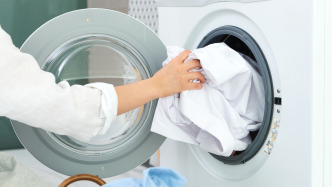
Researchers found that even using a washing machine's 60°C high-temperature water program failed to remove potentially harmful bacteria from clothing. This finding may be related to the rise of antibiotic resistance. The study, published recently in the "Public Library of Science-One", shows that contaminated fabrics may still be a source of infection for weeks. The study also found that using detergent at 60°C can both remove bacteria from clothes and remove stubborn stains.
Katie Laird of De Montfort University in the UK said that the National Health Service of the United Kingdom recommends that medical staff wash their uniforms in hot water at 60 degrees Celsius for 10 minutes to remove all microorganisms. "But what always makes me question is that you have no idea what the washing machine is doing."
To this end, Laird and his colleagues tested six models of household washing machines. They used fabric samples contaminated with Enterococcus faecalis, a bacterium that can cause urinary tract infections and other diseases. By testing the 60°C rapid wash and standard wash programs, the research team found that half of the washing machines failed to achieve "disinfection" in the rapid mode, that is, the number of bacteria was reduced by more than 90%. Even under the standard program, 1/3 of the washing machines still did not meet the standard.
“The problem is that most washing machines are unable to actually reach or maintain the set temperature during operation, especially during short wash cycles,” Laird explains. “We have seen machines operating at a temperature of only 20°C without the user knowing it.”
After observing changes in bacteria before and after washing, the research team also found evidence that microbes in the washing machine were resistant to detergents. DNA testing showed that these microbes began to evolve genes that helped them survive. Laird pointed out that this result suggests that using home washing machines to wash medical uniforms may lead to hospital-acquired infections and the spread of antibiotic resistance.
To minimise the number of bacteria and viruses in a home washing machine, Laird recommends regularly using a washing machine disinfectant, running a high-temperature programme at 90°C to clean the machine, and using a descaling agent to prevent scale buildup, as scale can affect the heating element.
Related paper information: https://doi.org/10.1371/journal.pone.0321467
(Original title: "Washing machines cannot effectively sterilize")